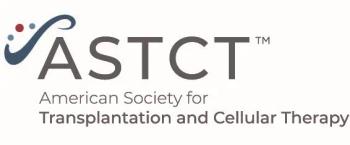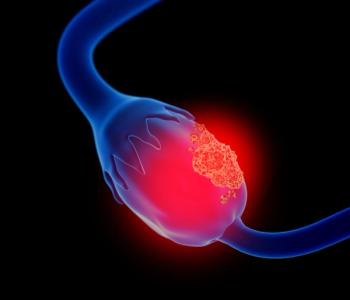![According to John Henson, MD, “What we need are better treatments to control the [brain] tumor once it’s detected.”](https://cdn.sanity.io/images/0vv8moc6/cancernetwork/e0d29c38bb732429ae370e4ef7d1829a10c96446-2992x1684.png?w=350&fit=crop&auto=format)
Belantamab Mafodotin Earns Japanese Approval in R/R Multiple Myeloma
Data from the DREAMM-7 and DREAMM-8 trials support the approval of belantamab mafodotin for patients with relapsed/refractory multiple myeloma in Japan.
Japan’s Ministry of Health, Labour and Welfare (MHLW) has approved 2 belantamab mafodotin-blmf (Blenrep)-based regimens for adult patients with relapsed/refractory multiple myeloma, according to a press release from the drug’s developer, GSK.1
“Today’s approval brings the benefits of [belantamab mafodotin] combinations to patients with relapsed or refractory multiple myeloma in Japan,” Hesham Abdullah, senior vice president, global head of Oncology Research & Development at GSK, stated in the press release.1 “Patients need additional treatment options at or after first relapse that can extend remission and survival vs the standard of care. [Belantamab mafodotin] combinations have the potential to redefine treatment outcomes based on superior efficacy shown in 2 phase 3 trials, with the added advantage of in-office administration in both academic and community treatment settings.”
Supporting data for the approval came from the
DREAMM-7
Findings from the DREAMM-7 study showed that the median progression-free survival (PFS) was 36.6 months with BVd vs 13.4 months with daratumumab (Darzalex) plus bortezomib/dexamethasone (DVd; HR, 0.4; 95% CI, 0.31-0.53; P <.00001). Additionally, with a median follow-up of 39.4 months, BVd met the key secondary end point of overall survival (OS) by reducing the risk of death by 42% (95% CI, 0.58; 95% CI, 0.43-0.79; P = .00023). At 3 years, the OS rates were 74% vs 60% in the BVd and DVd arms, respectively.
In the multicenter, open-label DREAMM-7 trial, 494 patients with disease progression following at least 1 prior line of treatment for relapsed/refractory multiple myeloma were randomly assigned 1:1 to receive BVd (n = 243) or DVd (n = 252). In the experimental arm, patients received belantamab mafodotin at 2.5 mg/kg intravenously every 3 weeks.
The study’s primary end point was PFS per independent review committee assessment. Secondary end points included OS, duration of response, and minimal residual disease (MRD)–negative status per next-generation sequencing.
DREAMM-8
Data from the DREAMM-8 study showed that at a median follow-up of 21.8 months, the median PFS was not reached (NR; 95% CI, 20.6-NR) with BPd compared with 12.7 months (95% CI, 9.1-18.5) with bortezomib plus pomalidomide and dexamethasone (PVd; HR, 0.52; 95% CI, 0.37-0.73; P <.001). The 1-year PFS rates were 71% (95% CI, 63%-78%) vs 51% (95% CI, 42%-60%) in each respective treatment arm. Investigators noted a PFS benefit with BPd across all pre-specified subgroups, which included patients with poor prognostic features like high-risk cytogenetics.
A positive OS trend was reported with BPd, although these outcomes did not reach statistical significance at the time of the interim analysis (HR, 0.77; 95% CI, 0.53-1.14). Investigators continue to follow up on OS and will conduct additional analyses.
In the open-label, multicenter DREAMM-8 trial, 302 patients with relapsed/refractory multiple myeloma and at least 1 prior line of treatment—including a lenalidomide (Revlimid)-based regimen—and progression on the most recent line of therapy were randomly assigned 1:1 to receive BPd (n = 155) or PVd (n = 147). Investigators administered belantamab mafodotin at 2.5 mg/kg intravenously in the first cycle and then 1.9 mg/kg intravenously every 4 weeks.
The trial’s primary end point was PFS per independent review committee assessment. Secondary end points included OS and MRD-negative rate.
Across the DREAMM-7 and DREAMM-8 trials, the safety and tolerability profiles of the belantamab mafodotin combinations were comparable with prior reports of each individual agent.
In the UK, the Medicines and Healthcare products Regulatory Agency
The
References
- Blenrep (belantamab mafodotin) combinations approved in Japan for treatment of relapsed/refractory multiple myeloma. News release. GSK. May 19, 2025. Accessed May 19, 2025. https://tinyurl.com/4zze5hk7
- Blenrep (belantamab mafodotin) combinations approved by UK MHRA in relapsed/refractory multiple myeloma. News release. GSK. April 17, 2025. Accessed May 19, 2025. https://tinyurl.com/pepj4ycv
- Blenrep combinations accepted for review by the US FDA for the treatment of relapsed/refractory multiple myeloma. News release. GSK. November 25, 2024. Accessed May 19, 2025. https://tinyurl.com/4wjtdf3t
Newsletter
Stay up to date on recent advances in the multidisciplinary approach to cancer.





















































































